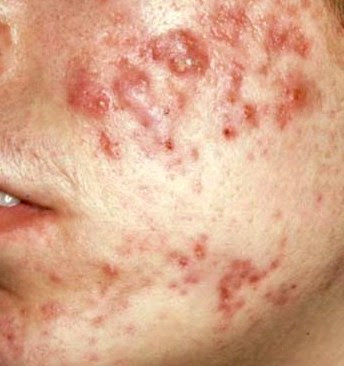SPONSORED
Acne vulgaris (or common acne): the dreadful skin disease of adolescence affects approximately more than 85% of teenagers. The bacterium that has been found to be associated with it is Propionibacterium acne. There are so many research related to acne. Some of the studies have come up with interesting results:

1. A study, based on a survey of 47,335 women, found a positive epidemiological association between acne and consumption of partially skimmed milk.
2. The University of Pennsylvania and the US Naval Academy conducted experiments that fed subjects chocolate and found that consumption of chocolate, frequent or not, had no effect on the development of acne.
3. A 2005 systematic review found "surprisingly little evidence exists for the efficacy or lack of efficacy of dietary factors, face-washing and sunlight exposure in the management of acne."
4. A study in November 2006 in Australia gave a 50% reduction in 12 weeks in mild-moderate facial acne by introducing its subjects to a high protein, low Glycaemic index diet
5. Contrary to popular belief acne is not caused by dirt.
6. It has long been known that short term improvement can be achieved with sunlight. However, studies have shown that sunlight worsens acne long-term. More recently, visible light has been successfully employed to treat acne.
7. Eating too much bread may trigger acne in teenagers.
8. The bacteria that cause acne may protect sufferers from other infections and cancer in later life.
9. A blue and red light mixture seems to be most effective treatment for acne - reducing the number of spots by three-quarters, says research.


